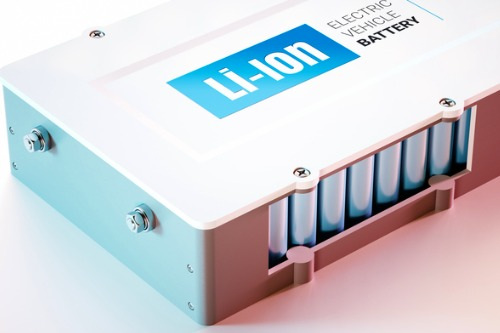Marine Cargo insurance and the challenges of transporting lithium-ion batteries

Stephanie Ogden, Managing Director UK and Ireland, HDI Global SE, takes a closer look at Marine Cargo, and specifically the transport of lithium batteries.
I'm excited to share with you the latest news and insights related to this topic.
We cover the challenges faced by clients when transporting batteries, the impact of new technologies in the industry, and the challenges and opportunities facing shippers and carriers.
Whether you're a shipowner, a broker, a logistics provider, or simply someone who is interested in this fascinating industry, we hope you'll find this newsletter informative and engaging. Our team of experts has worked hard to bring you the most up-to-date information and insights, so please don't hesitate to reach out if you have any questions or comments.
EV Battery Risks to the Marine Cargo Sector
It should come as no surprise to learn that the demand for electric vehicles (EVs) is growing. As technology and infrastructure advance, consumer demand accelerates. Research organisation Statista estimates that 8.6m electric vehicles will be sold worldwide during 2023 – an increase of 20.6% from 2022.
But with increasing demand comes increasing risk, especially for those who have the responsibility for supplying, storing and transporting these vehicles. Indeed, the fire and subsequent sinking of the Felicity Ace cargo ship in 2022 has highlighted the need for more awareness of the risks of EVs on board vessels. While the cause of the fire is unlikely to ever be known, it is thought that the presence of lithium batteries hampered efforts to save the ship and its cargo.
In this article, we explore the sources of these risks, the particular challenges faced by the marine cargo industry and next steps.
The inherent risks of lithium-ion batteries
Contrary to popular opinion, electric-powered vehicles are not more likely to catch fire than internal combustion engine (ICE) vehicles.
However, it is more difficult to extinguish EV fires when their batteries ignite. Experiences vary, but it can take approximately 20,000 litres of water and 2 hours to extinguish an EV fire. By comparison, it takes around 1,400 litres of water and 15 minutes to put out a conventional vehicle fire. As a result, the general insurance claims and consequential costs of EV fires tend to be higher.
The difficulty extinguishing an EV fire is partly because batteries tend to be integrated within the body of the vehicle and encapsulated. While water may be used to cool the fire and protect surrounding property, it is difficult to directly apply water to a burning battery.
In addition, lithium-ion batteries contain highly flammable, reactive materials and a high energy density of electricity. As a result, lithium batteries may catch fire when their internal structures are damaged by mechanical or electrical incidents. For instance, when connected to a faulty charging station. The fire may not happen immediately after the damage occurs either; there is a risk of a time delay when EVs crash.
Exacerbating these problems is the risk of thermal runaway. If a battery’s temperature exceeds safe levels, an exothermic chemical reaction may occur, which starts a fire. This fire fuels the chemical reaction and so on, promoting a runaway reaction with each fuelling the other. The intensity of thermal runaway varies, but is largely dependent on the battery’s state of charge (SOC), with higher charges resulting in more intense reactions.
Specialised fire blankets and water lances, which pierce the vehicle to put water on the battery, are being developed to tackle these fires but the solutions are not applicable in every scenario.
EV transportation risks
For the purposes of transportation, lithium batteries have been classified as dangerous goods for nearly 4 decades. However, lithium-ion batteries within EVs are not considered dangerous goods. As a result, there is currently no requirement for electric vehicles to be checked for mechanical damage when being loaded and unloaded onto transport vessels.
However, depending on the cell type and the higher the state of charge (SOC), EV batteries can become thermally unstable under certain conditions (mechanical, electrical and/or thermal stress), which may occur during transportation.
It’s important to note that the transportation of brand-new vehicles with batteries that have been thoroughly tested at the factory and charged to a relatively low energy level (30-50% SOC) under controlled conditions shortly before distribution must be considered from a different perspective than the transportation of used vehicles with an unknown history and possibly fully charged batteries. At present, this mainly occurs on RoPax ships and ferries, but could happen in the near future on car carriers as the secondary market for EVs expands.
These interrelationships mean that the cargo mix of new and used vehicles, and other battery-powered vehicles, require a separate risk assessment in each individual scenario.
According to the latest findings, the failure rate of new lithium-ion batteries is relatively low. This could also be the reason why fires related to battery failures in new vehicles during transportation are not currently considered a major problem by the shipping industry.
Vessel challenges
It is well known that hundreds, or even thousands, of vehicles may be stowed closely together on ships, especially car carriers. As a result, a ship fire, regardless of its cause and background, is particularly dangerous. This is because the general energy content of the materials in a vehicle (rubber, plastic, textiles, fuel, etc.), and thus its overall fire load, can be considered immense.
This circumstance alone poses an enormous challenge for the crew when fighting fires on board; the same also applies to land-based professional fire brigades, which are no longer able to comprehensively fight and extinguish a fire on board a RoRo ship. This challenge grows when delays in firefighting have already led to a fire that has spread to several vehicles.
Recent experience with fires on board RoRo vessels, regardless of the circumstances leading to the fire, has clearly shown that there is still much room for improvement in the detection, tactics in fighting and suppression of fires on board. The aim of all efforts must be to detect, contain and, if possible, extinguish an incipient fire quickly and safely with the available extinguishing agents.
The fundamental question now arises as to which extinguishing agents and fire-fighting tactics are best suited for use on board ships, taking into account the respective type of ship (PCC, PCTC, RoPax, ConRo or ferry) and the respective scenario (new vessels, used vessels, their mix and other accompanying cargo), and which are already available now and in the near future.
What’s next?
The move towards electric vehicles will have a significant impact on the international automotive market. An accelerated trend in new registrations of battery-powered vehicles, which will be further enhanced by the ban on new fossil-fuel cars in the EU by 2035, means more EVs will be transported in the near future.
As such, the call for best practices and standards for alternatively fuelled vehicles and electric vehicles is getting louder, especially for ocean transport where values in the triple-digit million pounds or euro range are rapidly rising.
According to recent press reports, the International Maritime Organisation has set up a special working group to address these challenges, with particular focus being placed on the safety and handling of electric vehicles.
Speak to an HDI Global SE marine cargo insurance expert today
If you’d like to speak to a member of HDI Global’s specialist marine cargo team about the transportation of EVs, CLICK HERE, leave a message and youTalk-insurance will pass your enquiry on.
Disclaimer: EV battery technology is the subject of ongoing research and development. This article is an exploration of the current risks based on data available at the time of writing and will be reviewed and updated in line with future research.
About HDI Global SE
Companies from the trading, production and service industries need an insurance partner they can rely on.
As part of the Talanx Group, HDI Global SE has been one of the leading insurers offering a broad and needs-based range of insurance solutions and accompanying services for decades.
HDI operates through foreign branches, subsidiaries and affiliates as well as network partners in more than 150 countries, offering international industrial insurance programmes.

